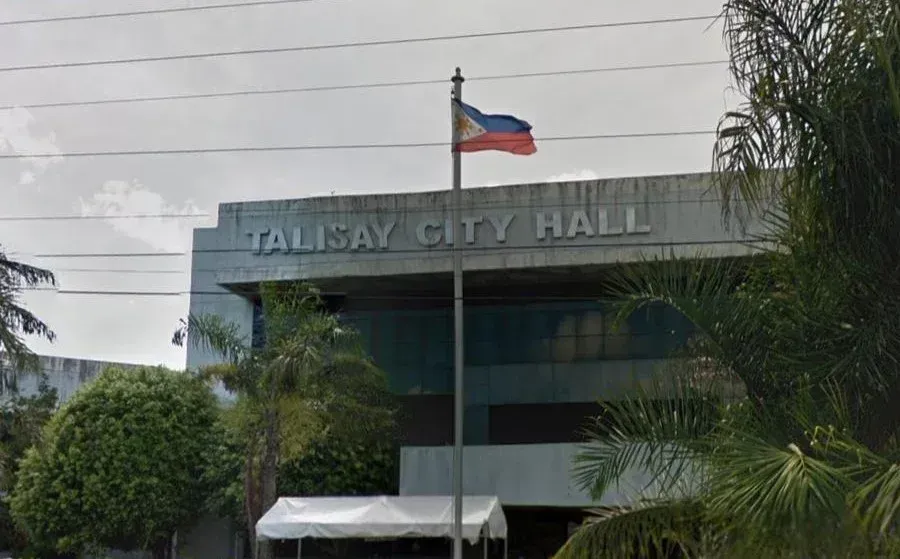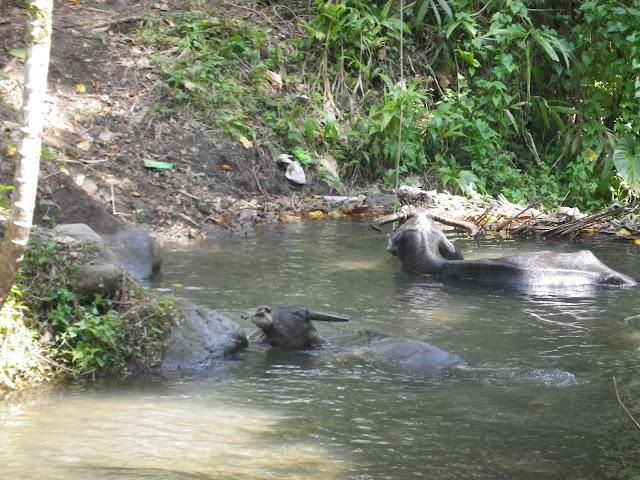🔴HOME
🔴PRIVACY POLICY
🔴 TERMS AND CONDITIONS
⭕ SMART: 098 5973 7798 ⭕ GLOBE: 091 5874 9128 ⭕LANDLINE: 034 466 4554
Talisay City Review In Negros Occidental
Talisay City, situated on the western coast of Negros Island in the Philippines, is a place where the sweet whispers of sugarcane fields have shaped its history and character. The city's roots are deeply entwined with the fertile soil that gave rise to this thriving community.
Long before the city's establishment, the area that would become Talisay was inhabited by indigenous Negrense tribes who cultivated the land and lived in harmony with nature. Their legacy is echoed in the rich agricultural traditions that endure to this day.
The Arrival of Spanish Colonizers
The arrival of Spanish colonizers in the Philippines in the 16th century marked the beginning of a new chapter in Talisay's history. The Spaniards, drawn by the region's fertile soil and favorable climate, established settlements along the coast of Negros.
Talisay, then a part of the larger province of Iloilo, was no exception. Spanish influence left a lasting imprint on the region, with the establishment of churches, schools, and administrative structures. The people of Talisay were introduced to Christianity, and the seeds of cultural change were sown.
The Sugar Revolution
The late 19th century witnessed a transformative period in Talisay's history with the advent of the sugar industry. The fertile plains and tropical climate of Negros Island made it an ideal location for sugarcane cultivation. As a result, sugar barons, known locally as "hacienderos," flocked to the region, amassing vast estates and plantations.
The growth of the sugar industry brought prosperity to Talisay, transforming it into a bustling center of commerce and trade. The hacienderos wielded significant economic influence and played pivotal roles in shaping the city's development.
The Revolutionary Spirit
The turn of the 20th century marked a period of significant political change in the Philippines. The call for independence from Spanish colonial rule reverberated throughout the archipelago, and Talisay was no exception.
Key figures in the struggle for Philippine independence, including local heroes like Aniceto Lacson and Juan Araneta, were born and raised in Talisay. Their leadership and unwavering commitment to the cause inspired the people of Talisay to join the fight for freedom.

American Influence and Growth
The early 20th century saw the Philippines transition from Spanish colonial rule to American colonial territory. American governance brought with it changes in governance, infrastructure development, and the introduction of English as an official language.
Talisay continued to prosper during this period, with the sugar industry maintaining its position as the economic backbone of the city. The American influence left an indelible mark on education and governance, shaping the city's future.
World War II and the Japanese Occupation
World War II brought unprecedented challenges to Talisay as it did to the rest of the Philippines. The city endured the hardships of the Japanese occupation, with residents facing food shortages and the harsh realities of war.
The people of Talisay demonstrated remarkable resilience during these trying times, supporting each other and working together to overcome adversity. After the war, the city embarked on the challenging path of reconstruction and rehabilitation.
Talisay's Transformation
The post-war era marked a period of growth and modernization for Talisay. The sugar industry continued to thrive, sustaining the city's economic progress. Talisay's skyline began to evolve with the construction of commercial buildings, educational institutions, and healthcare facilities.
Talisay's cultural heritage and traditions remained vibrant, with the city hosting local festivals and events that celebrated its history and diversity. Its proximity to Bacolod City, the provincial capital, further facilitated its growth as a thriving urban center.

A City of Cultural Heritage
Talisay is not only a city of progress but also a repository of cultural heritage. Its rich history is reflected in its historic landmarks, ancestral houses, and the preservation of local traditions. The city takes pride in its cultural diversity and the warm hospitality of its people.
Talisay's cultural heritage is also exemplified through its culinary traditions. The city is known for its delicious local dishes, including the mouthwatering "inasal" (grilled chicken) and the sweet treats that highlight the region's sugarcane heritage.
Talisay Today and Tomorrow
As Talisay City continues to evolve, it faces new challenges and opportunities on its path to the future. The city's commitment to sustainable development, education, and healthcare positions it for continued growth and progress.
Talisay's proximity to the vibrant city of Bacolod, its expanding commercial and residential developments, and its dedication to preserving its cultural heritage make it a city with a promising future. The people of Talisay remain at the heart of this transformation, driven by a deep sense of pride in their history and their vision for the city.
The Enduring Spirit of Talisay
Talisay City is more than just a geographical location; it is a testament to the resilience, cultural richness, and vibrant spirit of the Filipino people. Its journey from an agricultural settlement to a thriving urban center is a reflection of the indomitable spirit of its residents. Talisay remains a city of smiles, a place where the echoes of sugarcane fields and the warmth of its people continue to define its character and its future.
Talisay City, nestled within the province of Negros Occidental in the Philippines, is a destination rich in history, culture, and natural beauty. With its picturesque landscapes, historical sites, and vibrant community, Talisay has captured the hearts of both locals and visitors, offering a unique blend of experiences that reflect the essence of the region. Historically, Talisay has deep roots dating back to the Spanish colonial era. Its name is said to be derived from the "Talisay" tree, which was abundant in the area. The city played a significant role during the Philippine Revolution against Spanish colonial rule, with its brave inhabitants contributing to the struggle for independence. This historical backdrop lends an air of nostalgia to Talisay, as visitors can explore remnants of the past through heritage houses, churches, and monuments.
One of Talisay's notable attractions is The Ruins, a majestic mansion that stands as a testament to both love and tragedy. The mansion's story is intertwined with tales of romance and resilience, making it a popular spot for tourists seeking a glimpse into the past. The Ruins' iconic silhouette against the setting sun creates a captivating scene that continues to mesmerize visitors.
Talisay's natural beauty is equally captivating. The city boasts scenic coastal areas and tranquil beaches, inviting relaxation and leisure. Its proximity to the sea offers opportunities for water-based activities, from swimming and sunbathing to beach picnics and water sports.
Talisay's culture and traditions are celebrated through various festivals and events. The city comes alive during its annual fiesta, providing a platform for locals to showcase their talents and creativity through vibrant street dances, parades, and cultural performances.
For food enthusiasts, Talisay's culinary offerings are a treat not to be missed. The city's dining scene encompasses a range of flavors, from local delicacies to international cuisines. Visitors can indulge in authentic Negrense dishes and savor the unique blend of tastes that the region is known for.
Above all, it's the warmth and hospitality of Talisay's residents that truly leave a lasting impression. The genuine smiles and friendly interactions create a sense of belonging, making visitors feel like part of the community.
In essence, Talisay City is a captivating destination that encapsulates the spirit of Negros Occidental. Its historical significance, natural beauty, cultural celebrations, and warm embrace of its people come together to paint a vivid portrait of a city that is both rooted in the past and looking towards a vibrant future.
Should You Travel To Talisay?
Talisay City is located in the province of Negros Occidental, Philippines.
Historically significant, with roots dating back to the Spanish colonial era.
Named after the "Talisay" tree, which was abundant in the area.
Played a role in the Philippine Revolution against Spanish colonial rule.
Home to The Ruins, a majestic mansion with a romantic and tragic history.
Offers stunning coastal areas, beaches, and opportunities for water-based activities.
Celebrates its culture and traditions through lively festivals and events.
Annual fiesta showcases vibrant street dances, parades, and cultural performances.
Culinary scene features a variety of flavors, from local delicacies to international cuisine.
Known for its warm and hospitable residents who make visitors feel welcome.
Natural beauty, historical sites, and cultural richness make it an attractive destination.

Why Do Filipinos Love Going To Talisay City In Negros Occidental
Filipinos have a deep appreciation for Talisay City in Negros Occidental due to a range of captivating factors that make it a beloved destination. Here are some reasons why Filipinos love going to Talisay City:
Historical Significance: Talisay's rich historical heritage resonates with Filipinos who value their culture and past. The city played a role in the Philippine Revolution, and remnants of this history can be explored through heritage houses, churches, and monuments that offer a glimpse into the region's past.
The Ruins: The Ruins, an iconic mansion with a romantic and tragic story, captivates visitors' imaginations. Filipinos are drawn to this breathtaking site, where they can learn about its history, explore its architecture, and enjoy its stunning views, especially during sunset.
Scenic Beauty: Talisay's coastal areas and beaches provide picturesque spots for relaxation and leisure. Filipinos enjoy spending time by the sea, whether it's swimming, sunbathing, or simply enjoying a tranquil beach day.
Cultural Celebrations: The city's vibrant festivals and events celebrate its culture and traditions. Filipinos love joining in the festivities, experiencing colorful street dances, parades, and cultural performances that showcase Talisay's unique identity.
Warm Hospitality: The genuine warmth and friendliness of Talisay's residents leave a lasting impression on visitors. Filipinos appreciate the welcoming atmosphere, where they can feel like part of the community and create meaningful connections.
Food Exploration: Talisay's culinary scene offers a delightful array of flavors. Filipinos savor the opportunity to indulge in Negrense delicacies and explore the city's dining options, from local dishes to international cuisine.
Relaxing Getaway: Talisay provides a tranquil escape from the hustle and bustle of daily life. Filipinos seeking a break from urban routines find solace in the city's serene ambiance and coastal charm.
Family Bonding: Talisay offers a family-friendly environment, making it a popular destination for bonding with loved ones. Filipinos cherish the chance to create lasting memories with family members amidst the city's natural beauty and cultural attractions.
Pride in Place: Filipinos take pride in exploring and supporting local destinations. Visiting Talisay City allows them to connect with their roots, appreciate their heritage, and contribute to the local economy.
Scenic Views: Whether at The Ruins, the coastline, or other vantage points, Talisay City offers scenic vistas that Filipinos love capturing in photographs to share with friends and family.
In essence, Filipinos love going to Talisay City in Negros Occidental because of its historical allure, cultural richness, natural beauty, welcoming community, and the myriad of experiences that allow them to immerse themselves in a vibrant tapestry of traditions and memories.
Our Conclusion On Why People Love Travelling To Talisay City In Negros Occidental
In conclusion, Talisay City in Negros Occidental stands as a captivating destination that weaves together history, culture, natural beauty, and warm hospitality into a tapestry of unforgettable experiences. Its significance in the Philippine Revolution and the iconic presence of The Ruins reflect its deep-rooted historical heritage. The city's scenic coastal landscapes and tranquil beaches offer a haven for relaxation and leisure, while its vibrant festivals celebrate its cultural identity with colorful enthusiasm.
Talisay City's warm and welcoming community embodies the essence of Filipino hospitality, creating an atmosphere where visitors feel embraced and cherished. The city's culinary delights and family-friendly environment contribute to a sense of connection and bonding, making it a favored choice for both locals and tourists seeking a respite from daily routines.
As Filipinos explore Talisay City, they are met with a blend of past and present, where historical landmarks merge with modern experiences. This fusion enriches the cultural tapestry of the city and provides a platform for creating lasting memories.
Talisay City, with its historical significance, scenic beauty, cultural celebrations, and heartwarming encounters, beckons travelers to embark on a journey of discovery and appreciation. The city's allure is a reflection of its people, traditions, and the stories that have shaped its identity, making Talisay a cherished gem within the vibrant mosaic of Negros Occidental.

